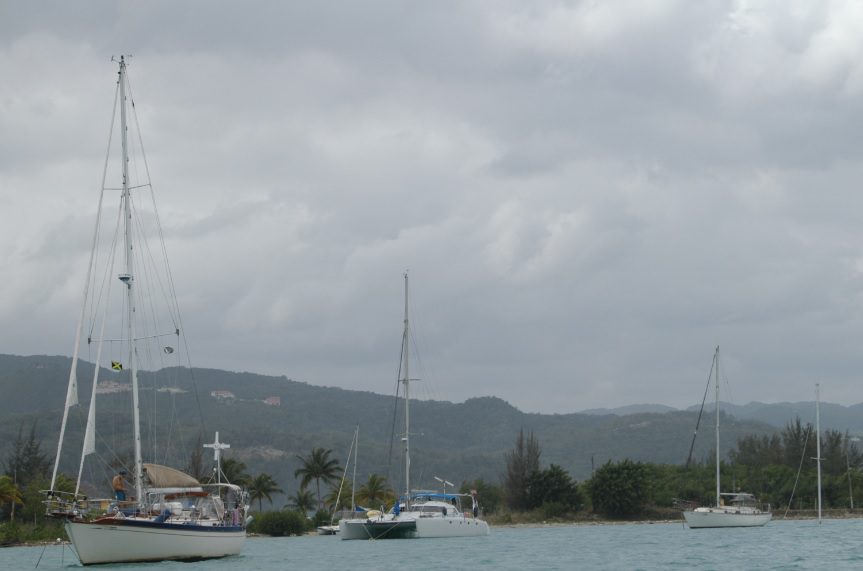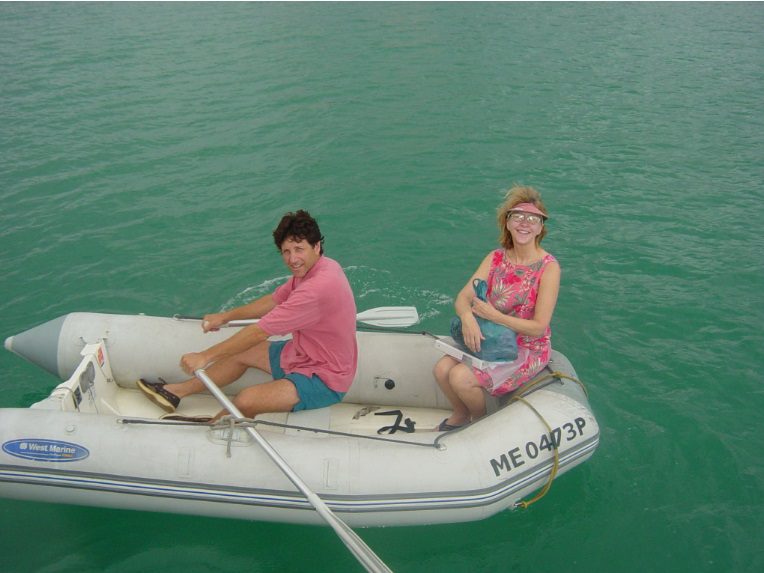South Pacific: Negril, Jamaica
Sunday, March 7, 2004:
N 18o15.224′, W 078o21.870′
(Mooring off of Rick’s Cafe, Negril Jamaica)
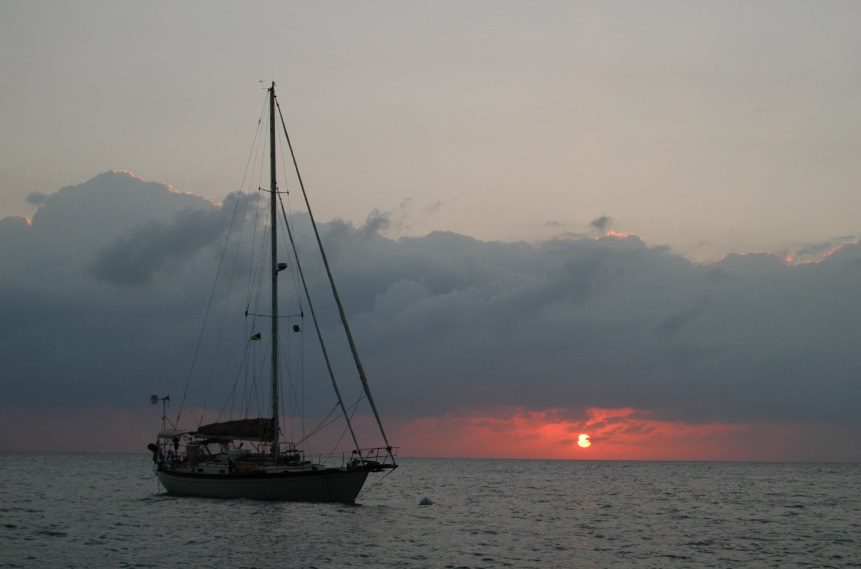
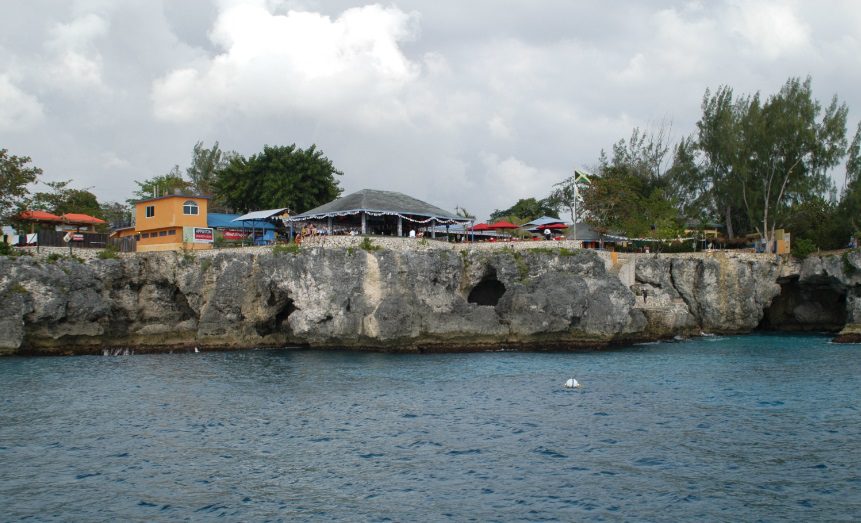
As indicated by the latitude and longitude we have moved well south, and the Lillian B. is now in Jamaican waters. More specifically, we are in Negril, which has metamorphosed into the “MTV,” spring break capital of Jamaica. Fifteen years ago, when Kay and I were last here, it was a secluded seven mile stretch of white beach with occasional bungalows. Now side-by-side resorts compete against each other by pumping out reggae from high wattage speakers. Still it is a beautiful spot, facing directly into the Caribbean sunsets.
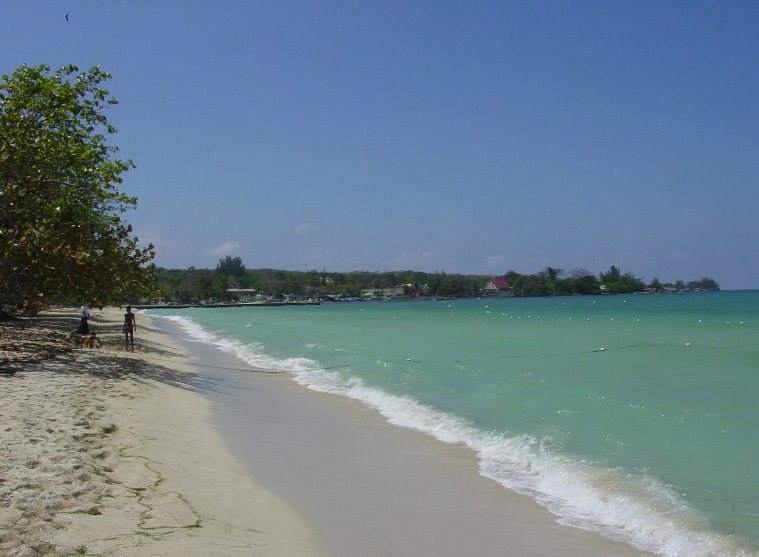
The trip down to Jamaica from Rum Cay was more high waves and wind. The most trying was the middle of the night leg from “Mira Por Vos passage” to the southern most Bahamian Island of Great Inagua. The tack was close into the wind, resulting in the waves pounding into and over the bow. Nine feet plus were the wave heights. After a mentally tiring night and morning of keeping Lillian on course, we finally came into the lee of Great Inagua Island around midday, and the waves and wind abated.
The reason for stopping at Great Inagua was to check out with customs at Matthew Town. Great Inagua Island is a desolate, or at least isolated, place. The main industry is the Morton Salt Company, and large piles of salt were visible as we approached. According to the guide book, one way to check out with customs is to pull up at the government dock in a small basin guarded by a cement entrance. After circling and watching the local fishing boats, we motored toward the entrance, which was not, by itself, large enough for Lillian to turn around. I’m still learning how to handle the boat under power and such entrances remind me of the lobster traps in Maine, where the lobster can get in, but then can’t back out. Reservations aside, we motored forward and pulled along side the cement pier at one side of the entrance. What I hadn’t anticipated was the surge from the ocean that funneled into that entrance. Lillian was lunging back and forth ten feet every few seconds and grinding hard against the bumpers Dick and Peter had hung over the side. Attempts to dampen the boat motion were entirely ineffective and resulted in a dangerous combination of straining lines moaning and scraping along the rough cement edge of the pier. Within minutes, the stern line was halfway chaffed through and we made the decision to back out before someone got seriously injured by a parting line. Backing out was less than pretty, but we escaped with only a few damaged dock lines and some bent life lines. A lesson learned in the power of surging water. We anchored offshore and rowed into customs. The group at the government dock that had watched our attempted entrance with detached interest was very helpful in calling up customs and immigration once I landed. A militia man named Antoine offered me a ride into town where the official kept the office open until past 7 pm so we could check out.
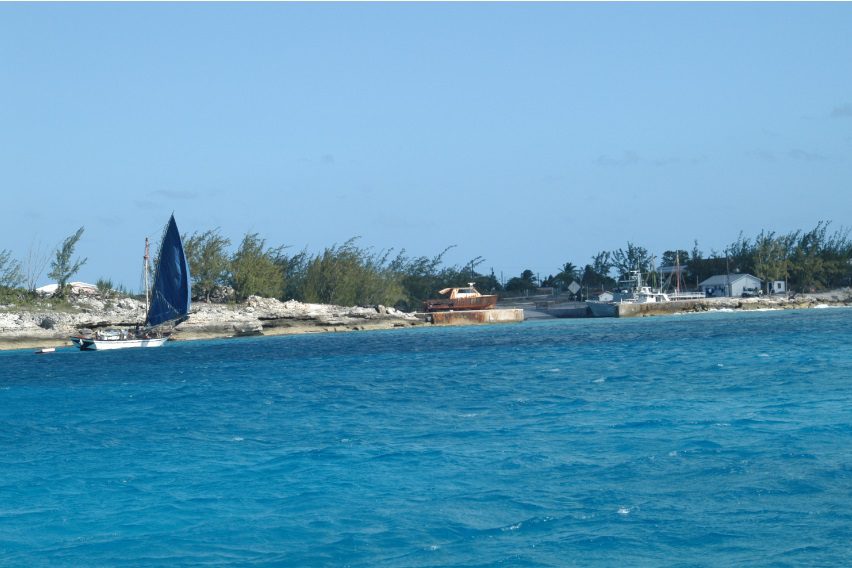
The next day, March 2, we left Matthew Town and the Bahamas for Montego Bay, Jamaica. Again we had strong winds and nine foot plus seas, but with the wind and current over our shoulder. Poor Dick hadn’t set foot on land since the morning of February 26th, so he was looking forward to some shore time. The plan was for Kay to fly into Montego Bay, Jamaica on the morning of the 4th and meet us at the Montego Bay Yacht Club, so I was also very much looking forward to getting there. Peter, too, I assume, was looking forward to landfall, but he also seemed to be enjoying whatever nature was throwing at him in the way of waves. By this time, we and the boat were so encrusted in salt that it was as if we were covered with glaze frosting. Our path the first night took us within 8 miles of Cuba. At one point, when I was at the helm, a wave hit just right, so as to douse me and fill the cockpit with water up to my ankles. During the day that would be great fun, but at night it is a little disconcerting. In spite of the darkness, the cockpit drains (scuppers) did their job. For some reason, the wind seems to like to strengthen when it’s dark. When the wind is over one’s shoulder, it is not obvious how much stronger it has become until it is past time to reduce sail. By then, it becomes more difficult to reef or pull in a sail. More than once on this trip I’ve had to use the motor to help keep the boat into, or nearly into, the wind to relieve pressure on the sail to enable Peter to reduce the sail area. Heading into those 9-12 waves resulted in what I’m sure was a wild ride for Peter up forward.
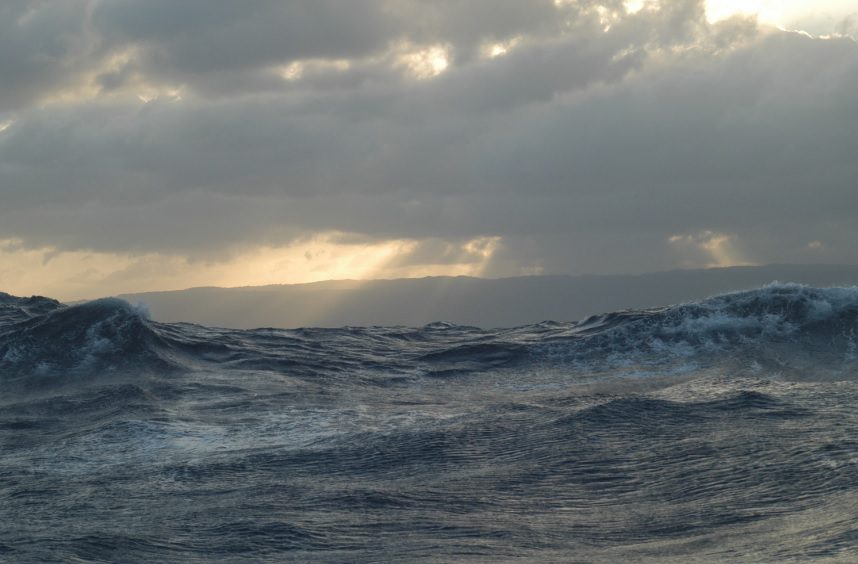
By early morning of the 4th, the winds and waves were beginning to calm down for the first time. 9-12 foot waves were becoming 6-8 foot with a much smoother motion. My watch that morning from 2am to 5am is one that I would like to keep in memory. Peter made me an extra strong cup of coffee as he went off watch. It did the trick and cleared my head of fatigue. A bright planet was above a gibbous moon in the western sky, making it easier to hold a steady course. The waves were still strong enough to make steering a challenge, but they also provided a surfing effect that is a nice motion when you catch it right, like body surfing with a boat. The speed indicator would occasionally jump up a knot in speed for an instant as a wave helped Lillian toward Jamaica. Steering with the help of GPS, imaginary points plotted out on charts back home on the kitchen table became imaginary points in the middle of the Caribbean, know only to the GPS satellites. Yet the end result was that the Island of Jamaica rose steeply to greet us at sunrise. By noon we were anchored and clearing customs in Montego Bay. Kay did a double take as she walked in the door of the yacht club. I’m not sure she wanted to claim me, at least without first explaining to the customs agent that my hair didn’t normally look that wind blown. As you can imagine, it was good to see her, and we all spent the next five days enjoying Jaimaica, moving from anchorage to anchorage, meeting a few fellow sailors, and enjoying the “no problem mon… respect” local culture.
